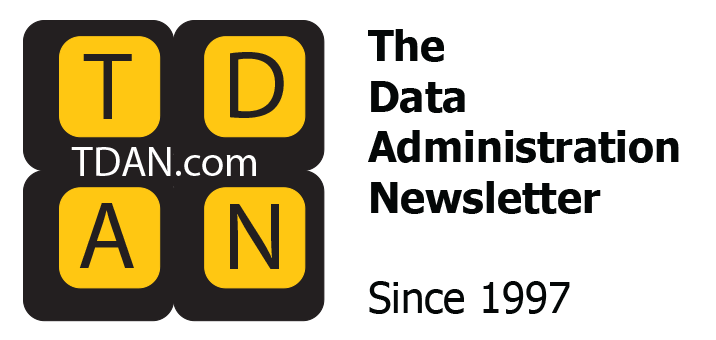
“AI is only as trustworthy as the data that fuels it.”
This statement has never been more relevant. AI systems now power decisions, affecting credit approvals, medical diagnoses, fraud detection, and countless other critical areas. Yet without transparency into data sources, quality, and lineage, AI can quickly become a black box — opaque, unpredictable, and difficult to trust. Regulators, customers, and business stakeholders alike are increasingly demanding clarity, accountability, and evidence that AI outputs are reliable.
Data contracts provide the scaffolding for this transparency. By explicitly defining data expectations, enforcing quality rules, and documenting changes over time, data contracts transform AI from opaque to auditable, giving organizations the confidence to innovate responsibly.
What Are Data Contracts?
A data contract transcends traditional schemas or data-sharing agreements. It’s a comprehensive specification that defines not only data structure, but also meaning, quality expectations, delivery mechanisms, and lifecycle management. Think of it as a contractual handshake between data producers and consumers — explicit, testable, and enforceable.
Key Elements of a Data Contract
- Metadata & Lineage: Capture business context, definitions, and data origin to trace how information flows through pipelines.
- Valid Values & Business Rules: Define enumerations, ranges, and logic to prevent errors and inconsistencies before they reach consumers.
- Constraints & Validation: Apply automated checks to block bad data, with clear escalation paths for violations.
- Delivery Expectations: Specify frequency, delivery methods, retention policies, and error-handling for predictable, auditable operations.
Advanced Components — Modern data contracts can also define:
- Schema Evolution Rules: Support backward/forward compatibility, with impact assessments for breaking changes.
- Performance Standards: Set metrics for freshness, availability, and processing time to ensure reliable ML operations.
- Security & Privacy Controls: Embed field-level access rules, masking, anonymization, and compliance requirements into governance.
Together, these elements elevate data contracts from technical specs to governance tools that drive operational reliability and regulatory accountability.
From Black Box to Glass Box: Why Data Contracts Enable Transparent AI
AI models amplify the impact of flawed or misunderstood data. A single schema change, unexpected value, or undocumented assumption can silently degrade performance, introduce bias, or trigger compliance violations. Unlike traditional software, where errors surface quickly, AI can quietly compound mistakes through predictions that appear reasonable.
How Data Contracts Reduce Systemic Risks
- Data Quality Assurance: Enforce valid values, constraints, and formats to ensure reliable training and inference data.
- Auditability & Traceability: Provide lineage, assumptions, and transformation records so stakeholders can explain and verify model outputs.
- Compliance Support: Maintain governed, well-documented data pipelines that satisfy auditors and regulators.
- Trust Building: Formal agreements between producers and consumers establish confidence that AI rests on a well-governed foundation.
Making AI Transparent Through Data Governance
By embedding governance into the ML lifecycle, data contracts transform AI pipelines into inspectable, auditable systems. They prevent semantic drift (e.g., repurposed fields without notice), document schema evolution, and capture business rules that surface fairness or representation gaps. In doing so, they shift AI from opaque black boxes to transparent glass boxes — where every decision can be traced, explained, and held accountable.
Extending Data Contracts to Unstructured Data
While traditional contracts focus on structured datasets, unstructured data — text, images, audio, video, logs, and sensor streams — increasingly drives AI innovation. Modern contracts adapt through flexible, metadata-driven approaches:
- Rich Metadata as Schema Proxy: Even unstructured data can be governed through comprehensive metadata — file formats, source systems, languages, resolutions, processing histories, labels and annotation statuses that make datasets inspectable and traceable.
- Quality Validation Rules: High-level checks apply universally — OCR confidence thresholds for scanned documents, minimum resolution standards for images, audio sampling rates, or log pattern consistency monitoring.
- Semantic Business Rules: Contracts define content expectations — required document sections, acceptable image categories, prohibited content in text corpora etc.
- Lifecycle Management: Version control for evolving datasets, tracking new additions, annotation updates, and transformations over time to ensure reproducibility and regulatory compliance.
“Even messy, unstructured data can be governed. Data contracts provide a flexible framework to ensure reliability and accountability across any data type.”
Designing Data Contracts
Versioning and Evolution
Data is dynamic, and business rules evolve. Any data contract worth its salt must account for this change. Versioning is a core component of contract design.
Minor, backward-compatible changes — such as adding optional fields or enhancing metadata — are managed with notifications and monitoring. Major, breaking changes — like removing fields, introducing new required fields, or changing semantics — require structured consultation with impacted teams, impact analysis, collaborative planning, testing, and controlled rollout.
This structured approach ensures pipelines remain reliable while evolving, allowing organizations to scale AI responsibly without compromising trust.
Governance as an Integral Component
Effective governance requires clear organizational accountability embedded directly into contract design:
Data Producers: Ensure quality standards, document all changes with impact assessments, and support consumer testing and validation.
Data Consumers: Validate downstream integrations, provide feedback on quality requirements, and report contract violations promptly.
Governance Teams: Enforce enterprise standards, maintain centralized contract registries, facilitate cross-team collaboration, and resolve conflicts through established escalation procedures.
Governance shouldn’t be an afterthought — it must be built into the contract structure itself, ensuring accountability and quality from the ground up.
Implementation: From Pilot to Production
Phase 1 — High-Impact Pilot: Start with your most critical AI system — typically fraud detection, recommendation engines, or risk assessment models. Apply contracts, document flows, address top quality issues, and measure baseline debugging and data reliability.
Phase 2 — Cross-Team Expansion: Scale across related systems. Standardize processes, train teams, automate validation, and track efficiency gains. Train data and ML engineering teams on contract creation.
Phase 3 — Enterprise Integration (Months 7-12): Embed contracts enterprise-wide into the org DNA through catalogs, MLOps, self-service tools, and governance cycles — showing ROI in audits and stakeholder trust.
Best Practices and Avoiding Common Pitfalls
To maximize data contract value:
- Prioritize Business Impact: Start with datasets powering revenue-critical or high-risk AI.
- Keep Contracts Dynamic: Define clear processes for schema and metadata evolution.
- Automate Monitoring: Flag violations, quality drops, and usage shifts in real time.
- Embed Governance Early: Make contracts mandatory before production deployment.
- Engage Stakeholders: Involve compliance, risk, domain experts, and end users — not just engineers.
Avoid these common traps that undermine success:
- The “Schema-Only” Trap: Real value comes from capturing business logic, quality expectations, and consumer requirements — not just field definitions. Organizations that focus only on technical specifications miss the governance and accountability benefits that make contracts truly valuable.
- Change Management Neglect: Establish clear change notification and impact assessment processes to prevent contracts from becoming outdated. Without proper change management, contracts quickly become documentation debt rather than living governance tools.
- Tool-First Thinking: Success depends on people and processes. Invest in training and clear roles before optimizing tooling. The best platforms can’t fix poor governance practices or unclear accountability structures.
- Perfectionism Paralysis: Start with high-impact datasets, establish basic quality rules, and iterate based on operational feedback. Waiting for perfect contracts prevents organizations from gaining the early wins that build momentum and stakeholder support.
Conclusion
Data contracts bridge the gap between AI innovation and accountability, ensuring clarity, quality, and traceability at the source. Organizations that embed them into AI workflows cultivate trust with regulators, customers, and executives while gaining competitive advantage through superior data governance.
Well-designed data contracts make transparency achievable: every pipeline auditable, every model explainable, and every outcome accountable. By putting contracts at the heart of AI design, organizations can innovate confidently while safeguarding trust.
Ready to start? Identify your highest-stakes AI system, document its current data flows, and create your first contract for the most critical dataset. That single step begins your journey toward trustworthy, transparent AI.
